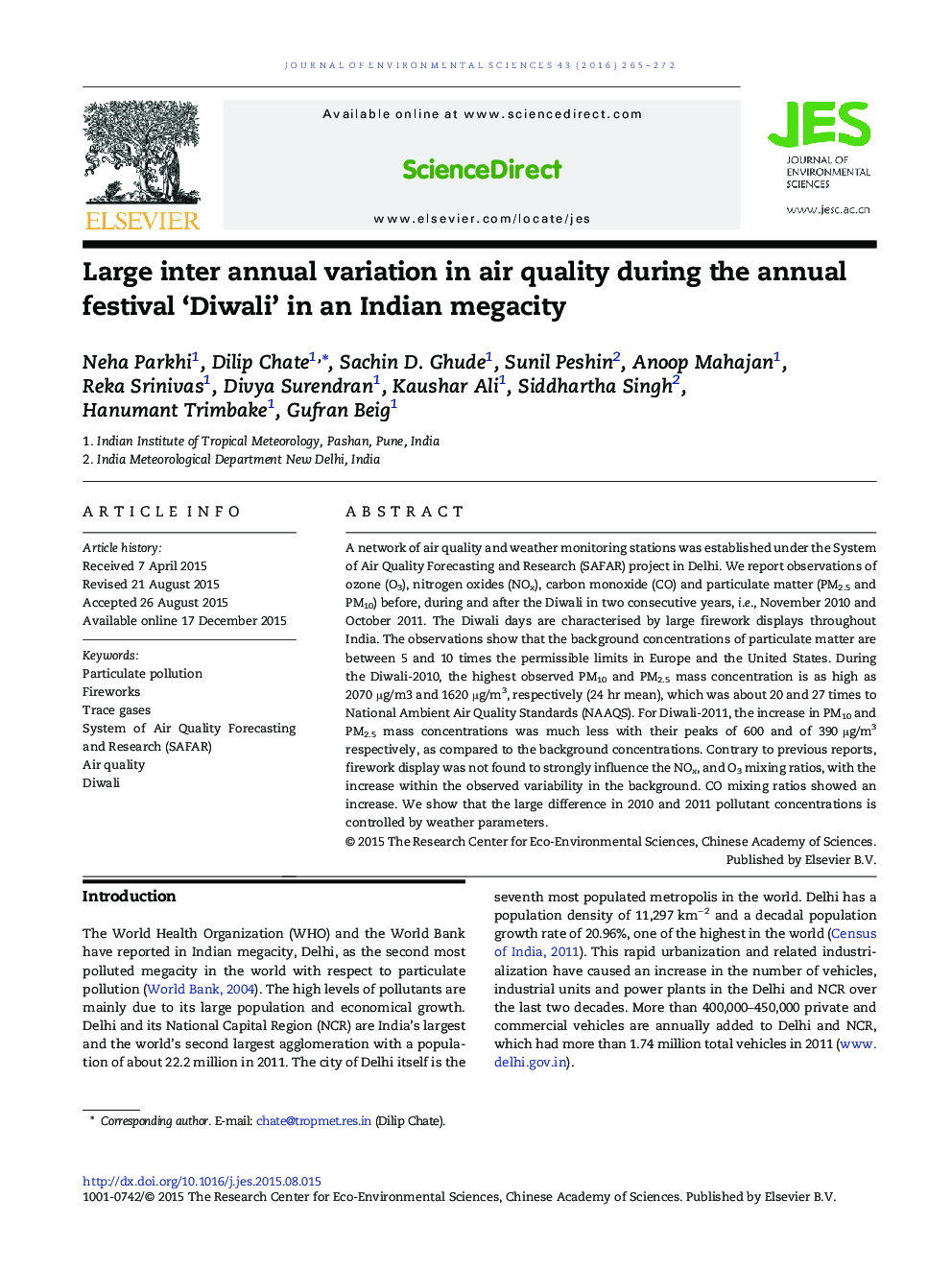| Article ID | Journal | Published Year | Pages | File Type |
|---|---|---|---|---|
| 4453680 | Journal of Environmental Sciences | 2016 | 8 Pages |
A network of air quality and weather monitoring stations was established under the System of Air Quality Forecasting and Research (SAFAR) project in Delhi. We report observations of ozone (O3), nitrogen oxides (NOx), carbon monoxide (CO) and particulate matter (PM2.5 and PM10) before, during and after the Diwali in two consecutive years, i.e., November 2010 and October 2011. The Diwali days are characterised by large firework displays throughout India. The observations show that the background concentrations of particulate matter are between 5 and 10 times the permissible limits in Europe and the United States. During the Diwali-2010, the highest observed PM10 and PM2.5 mass concentration is as high as 2070 µg/m3 and 1620 μg/m3, respectively (24 hr mean), which was about 20 and 27 times to National Ambient Air Quality Standards (NAAQS). For Diwali-2011, the increase in PM10 and PM2.5 mass concentrations was much less with their peaks of 600 and of 390 μg/m3 respectively, as compared to the background concentrations. Contrary to previous reports, firework display was not found to strongly influence the NOx, and O3 mixing ratios, with the increase within the observed variability in the background. CO mixing ratios showed an increase. We show that the large difference in 2010 and 2011 pollutant concentrations is controlled by weather parameters.
Graphical AbstractFigure optionsDownload full-size imageDownload as PowerPoint slide
